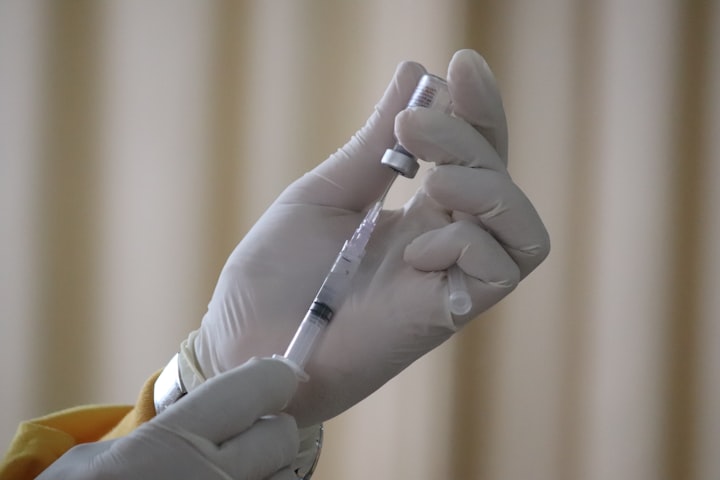How New Vaccine Technologies Could Reduce The Massive Death Toll From Malaria
Malaria vaccine

Malaria is a life-threatening disease caused by the Plasmodium parasite and transmitted through the bites of infected female Anopheles mosquitoes. According to the World Health Organization (WHO), in 2019, there were an estimated 229 million cases of malaria worldwide, resulting in 409,000 deaths. The majority of these deaths occurred in sub-Saharan Africa, and children under five years old were the most vulnerable.
There are various methods available to control and prevent malaria, such as insecticide-treated mosquito nets, indoor residual spraying, and antimalarial drugs. However, the development of an effective vaccine against malaria could significantly reduce the burden of the disease and potentially save millions of lives.
Historically, vaccine development against malaria has been challenging due to the complex life cycle of the Plasmodium parasite in the human body. The parasite has multiple stages, including liver stage and blood stage, which require the immune system to target different antigens. In addition, the parasite can evade the immune system by changing its surface antigens, making it difficult to develop a durable immune response.
However, recent advances in vaccine technology offer promising avenues for developing an effective malaria vaccine. The following are some of the new vaccine technologies that could contribute to reducing the massive toll of malaria deaths.
1. Whole Parasite Vaccines
Whole parasite vaccines involve exposing individuals to either live or weakened parasites, which can induce a robust immune response. The advantage of this approach is that it targets multiple antigens, mimicking natural infection, and can potentially provide long-lasting protection. The most advanced whole parasite vaccine is Sanaria® PfSPZ vaccine, which is composed of live attenuated sporozoites (parasites at the liver stage). Clinical trials have shown that this vaccine can provide up to 100% protection against malaria in some individuals under controlled conditions.
2. Subunit Vaccines
Subunit vaccines use specific parts of the parasite or synthetic peptides to stimulate an immune response. This approach has the advantage of targeting only the relevant antigens, reducing the risk of adverse events. Several subunit vaccines are in development, including RTS,S/AS01, which targets circumsporozoite protein (CSP) and has shown promising results in clinical trials, although its efficacy wanes over time.
3. RNA and DNA Vaccines
RNA and DNA vaccines are types of vaccines that use genetic material from a virus or pathogen to help the immune system to produce an immune response against the illness.
RNA vaccines are made of messenger RNA (mRNA) that are designed to produce a specific protein, which triggers an immune response. The mRNA is injected into the body, and the cells then use this genetic information to produce the protein that the immune system recognizes as foreign. This triggers an immune response, which creates memory immune cells that can protect against future infections. RNA vaccines are easier and quicker to produce than traditional vaccines, as they do not require the use of live viruses or bacterial cultures.
DNA vaccines, on the other hand, use a piece of DNA that codes for a protein of the virus or pathogen. The DNA is inserted into a plasmid, which is then injected into the body. The plasmid enters the host cells, and the DNA is then transcribed into mRNA, which is used to produce the protein that triggers the immune response. Like RNA vaccines, DNA vaccines also create memory immune cells that can provide long-term protection.
Both RNA and DNA vaccines have shown great promise in recent years, with mRNA vaccines being used to combat diseases such as COVID-19, and DNA vaccines being developed for diseases such as Zika and Ebola. The development of these vaccines has allowed for a faster response to new infectious diseases and may lead to more effective prevention strategies in the future.
4. Viral Vector Vaccines
Viral vector vaccines use a harmless virus to deliver genetic material encoding relevant antigens into cells, triggering an immune response. The viral vector approach has the advantage of being able to deliver multiple antigens, making it potentially more effective than subunit vaccines. Several viral vector vaccines are in development, including those using adenovirus, vesicular stomatitis virus (VSV), and poxviruses.
In conclusion, the development of an effective vaccine against malaria is essential to reducing the massive death toll from the disease. While historically challenging, recent advances in vaccine technology offer promising avenues for developing a vaccine that can provide long-lasting protection against this deadly disease. These new vaccine technologies must be thoroughly evaluated in clinical trials, and partnerships between governments, research institutions, and pharmaceutical companies will be critical to bringing these vaccines to those most in need. By investing in malaria vaccine development today, we can potentially save millions of lives in the future.
About the Creator
Angelina Reen
Penning down my thoughts, stories, and lessons to inspire and bring joy. Join me on my journey of self-discovery!






Comments
There are no comments for this story
Be the first to respond and start the conversation.